Key Information
Course Format: Distance learning, assessment only - encouraging independent, adult-centred, self-directed learning
Enrolment: April - November
Assessment: Case diary with synopsis, critical commentaries and case reports
Timetable: November - March
Enrol Now
Course Information
Please note:
You can only purchase this course online if you are an existing CertAVP candidate. During the checkout process you will be required to enter your RVC username.
How to enrol as a new CertAVP candidate.
At the end of the module, candidates should be able to:
- Examine a horse and appreciate the relevance of clinical, haematological, biochemical and other specific diagnostic findings on the conduct of anaesthesia and management of the perioperative period
- Appreciate the impact of pre-existing disease on the conduct of anaesthesia and management of the perioperative period
- Understand the pharmacology and clinical use of drugs used for premedication, sedation and standing surgical anaesthesia
- Understand the pharmacology and clinical use of intravenous anaesthetic drugs and their use in total intravenous techniques
- Understand the pharmacology of the inhalant anaesthetic agents and their use in anaesthesia
- Understand the functional characteristics of the anaesthetic breathing systems
- Appreciate the advantages and disadvantages of intermittent positive pressure ventilation and how this may be delivered
- Understand in general terms how the electronic monitoring systems used during anaesthesia function, and be able to interpret the information they provide
- Understand the anatomy of the spinal chord, epidural space and peripheral nerves commonly blocked by local anaesthetic techniques. Understand the pharmacology of local analgesic drugs, their application (topical, local infiltration, regional and epidural techniques) and appreciate the procedures suited to local analgesic techniques
- Understand the effects of anaesthesia on cardiovascular function, appreciate how these effects can be minimised and the pharmacology of drugs commonly used to support cardiovascular function
- Plan and deliver appropriate fluid therapy (including an awareness of the principles of blood transfusion)
- Understand the effects of anaesthesia on oxygenation and ventilation. Appreciate how these are maintained and monitored during anaesthesia
- Understand the specific problems associated with anaesthesia in foals including the effects of pre-existing disease, hypothermia and management of the mare
- Recognise and deal with common anaesthetic emergencies and complications that develop in the postoperative period, which result in mortality or morbidity. Understand the pathophysiology of these conditions and methods to minimise their development
- Review and constructively criticise current literature on the speciality, to determine its relevance to their current practice
- Utilise their understanding of Evidence Based Medicine and Decision Analysis to develop practical anaesthetic techniques for their patients
- Review the outcomes of at least part of their clinical work, using the process of clinical audit to improve performance
- Recognise when a case is beyond their personal or practice capabilities, and provide an effective channel of referral
Please download the Module Syllabus, found in the Key Information box

